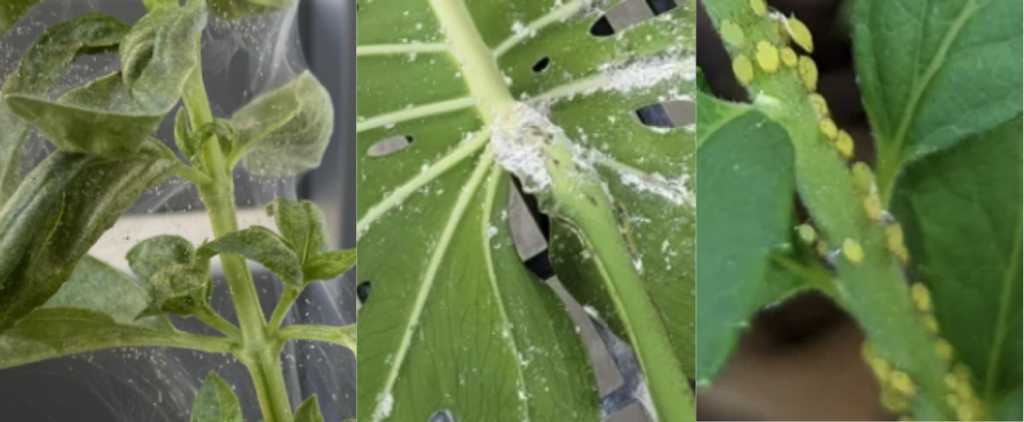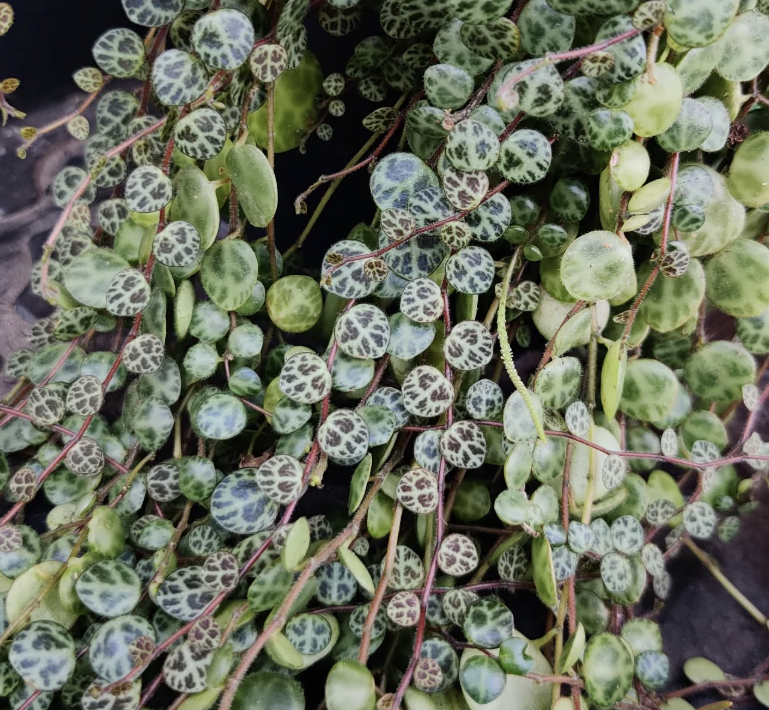If you’re looking to add a charming trailing plant to your indoor collection, the string of turtles is an excellent choice.
Known for its tiny leaves resembling the shell of a miniature turtle, this plant is not only aesthetically pleasing but also relatively easy to care for with the right knowledge.
Here’s a comprehensive guide to help you ensure your peperomia prostrata thrives.
Why Have a String of Turtles Plant?
Native to the Brazilian rainforests, the string of turtles plant is a delicate succulent-like plant that brings a tropical vibe to any space. Its slow growth rate and small size make it a perfect fit for shelves, hanging baskets, or small pots.
As a plant enthusiast, you’ll appreciate its unique leaf shape and trailing vines that enhance your indoor plant collection. Plus, it’s a good choice for those who enjoy caring for succulent plants without needing intense maintenance.
How to Identify a String of Turtles Plant
The peperomia prostrata is part of the peperomia genus and can be identified by its tiny leaf patterns that mimic the look of turtle shells.
These green leaves often have white veins or light orange hues, adding to their visual appeal. The plant’s growth habit is vine-like, with delicate leaves trailing down slender stems.
Size and Growth Habit
This particular plant is a slow grower, reaching its full maturity at about 12 inches in length. The plant’s leaves remain small, maintaining their charm. With proper care, you can encourage bushier growth and vibrant new leaves.
Light Requirements
To replicate its natural habitat in the tropical forests of South America, place your string of turtles in indirect sunlight.
While it can tolerate low light conditions, enough light is essential for healthy growth. Avoid full sun, as it can scorch the delicate leaves.
Watering Needs
Overwatering is one of the most common mistakes with this plant. Use the soak-and-dry method: water thoroughly, ensuring moist soil but let the top inches of soil dry out before watering again.
Avoid excess water, as it can lead to root rot. Always use pots with drainage holes to prevent waterlogging.
Temperature Range
The string of turtles thrives in a temperature range of 65°F to 80°F.
Keep it away from cold drafts and avoid exposing it to temperatures below 50°F, especially during the winter months.
Humidity Levels
This plant native to tropical regions prefers high humidity. Use a pebble tray or a humidifier to maintain moist conditions. If your home is particularly dry, misting the plant occasionally can provide that bit of extra humidity it loves.
Soil Requirements
A well-draining soil mix is crucial for your string of turtles. Opt for a blend that includes peat moss, succulent soil, and coarse sand to allow for good drainage and proper aeration.
Fertilizer
During the growing season (spring and summer), feed your plant with a balanced liquid fertilizer diluted to half strength.
This will encourage new growth without overwhelming the plant. Fertilize once a month for best results, and pause during the winter months.
Potting and Repotting
Choose a size of the pot that fits the current pot with some extra room for growth. Repotting every two to three years is usually sufficient, but you should consider repotting sooner if the plant becomes root-bound.
When repotting, use fresh well-draining soil mix and ensure the new pot has drainage holes to support healthy roots. Gently handle the roots, as they are delicate and prone to damage.
Pruning
Regular pruning helps maintain the plant’s shape and encourages bushier growth. Trim vine-like stems just above a leaf node to stimulate new leaves at the top of the plant.
Pruning also helps remove any yellowing lower leaves or dead foliage, promoting healthy growth. Be sure to use clean, sharp scissors to avoid introducing disease to the plant.
Propagation
The best way to propagate string of turtles is through stem cuttings. Follow these steps for successful propagation:
- Select a Healthy Stem: Choose a healthy stem with at least two to three leaf nodes.
- Cut and Prepare: Using clean scissors, cut the stem below a node. Allow the cutting to callous for 24 hours.
- Choose a Medium: Plant the cutting in a small pot with moist soil, or place it in a container of water to encourage root growth.
- Care for the Cutting: If propagating in water, change the water every few days. Once roots are 1-2 inches long, transfer to soil. For soil propagation, keep the soil consistently moist but not soggy until roots establish.
With patience, you’ll see new plants forming within a few weeks.
Pests
While generally resilient, common pests like spider mites, mealybugs, and fungus gnats can attack your string of turtles plant. Here’s how to manage each:
- Spider Mites: These tiny pests create webbing on the leaves and stems. Treat with neem oil or an insecticidal soap spray.
- Mealybugs: Visible as white, cotton-like clumps. Wipe the plant down with a cotton swab dipped in rubbing alcohol.
- Fungus Gnats: These pests thrive in overly moist soil. Allow the top layer of soil to dry out and use sticky traps to catch adult gnats.
Regularly inspect the plant’s leaves and stems to catch infestations early.

Diseases
The most common diseases affecting string of turtles are root rot and fungal diseases like leaf spot. Here’s how to prevent and treat them:
- Root Rot: Caused by overwatering and poor drainage. Ensure the pot has drainage holes and avoid letting the plant sit in soggy soil. Remove any affected roots and repot in fresh soil if needed.
- Fungal Leaf Spot: This appears as small, dark spots on the leaves. Improve airflow around the plant and avoid splashing water on the foliage. Treat with a fungicide if necessary.
Proper watering practices and good airflow are key to avoiding these issues.
Is It Toxic?

Good news! The string of turtles plant is non-toxic to humans and pets. However, ingestion may cause mild gastrointestinal upset in small children or pets, so it’s still a good idea to keep it out of reach.
Common Issues and Solutions
- Lack of leaves or slow growth: Ensure the plant gets enough light and the right soil moisture. It may also need fresh fertilizer during the growing season.
- Yellowing lower leaves: This is often caused by excess water. Allow the soil to dry out and ensure proper drainage.
- Dry, crispy leaves: Low humidity or insufficient watering can lead to dryness. Increase humidity levels and water more frequently, but avoid overwatering.
- Brown or scorched leaves: This is usually due to too much direct sunlight. Move the plant to a spot with indirect light.
Difficulty Level
The string of turtles is a beginner-friendly plant but does require attention to its watering needs and humidity preferences. With proper care, it’s a delightful addition to any home.
Which Species to Select?
While the peperomia prostrata is the most popular, other species in the peperomia genus like the magic marmer offer similar charm with subtle differences in appearance.
By following these tips, you can ensure your string of turtles plant remains a healthy, thriving part of your collection. With its tiny turtle shells and trailing beauty, this delicate plant is sure to become a favorite among your unique plants.
Frequently Asked Questions
Why is my string of turtles dropping leaves?
Dropping leaves can be caused by overwatering, underwatering, or sudden changes in temperature or light. Ensure the plant is not sitting in water and receives consistent care.
Why is my string of turtles flowering?
Flowering is a natural response during the plant’s lifecycle. The flowers are small and insignificant but indicate the plant is mature and receiving good care.
Why is my string of turtles turning brown?
Brown leaves often result from too much sun exposure, lack of humidity, or overwatering. Adjust light levels, increase humidity, and check soil moisture.
Why is my string of turtles not growing?
A lack of growth can be due to insufficient light, poor soil, or the plant being root-bound. Ensure it’s in indirect sunlight, use a nutrient-rich well-draining soil mix, and repot if needed.
Do string of turtles like to be misted?
Yes, occasional misting can help increase humidity levels, especially in dry environments. Avoid misting too frequently to prevent fungal issues.
Do string of turtles like to be root bound?
These plants can tolerate being slightly root-bound but will grow better if given room. Repot every 2-3 years or when growth slows significantly.
Do string of turtles like humidity?
Yes, they thrive in high humidity, similar to their natural habitat in tropical rainforests. Use a humidifier or pebble tray for added moisture.
How to make string of turtles fuller?
Prune the plant regularly to encourage bushier growth. Pinch back the stems just above a leaf node to promote branching.
How to grow string of turtles from cuttings?
Take a healthy stem cutting with at least two leaves. Allow the cutting to callous over for a day, then plant it in moist soil or place it in water until roots form. Transfer to soil for long-term growth.

